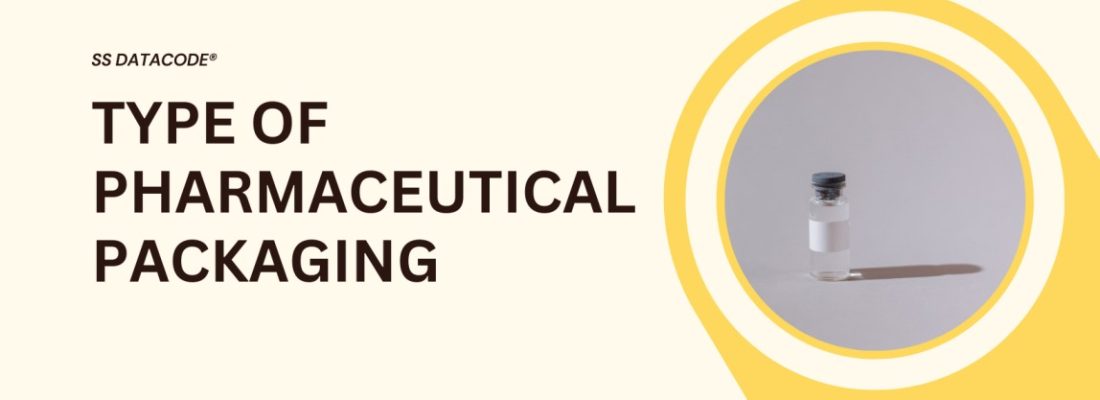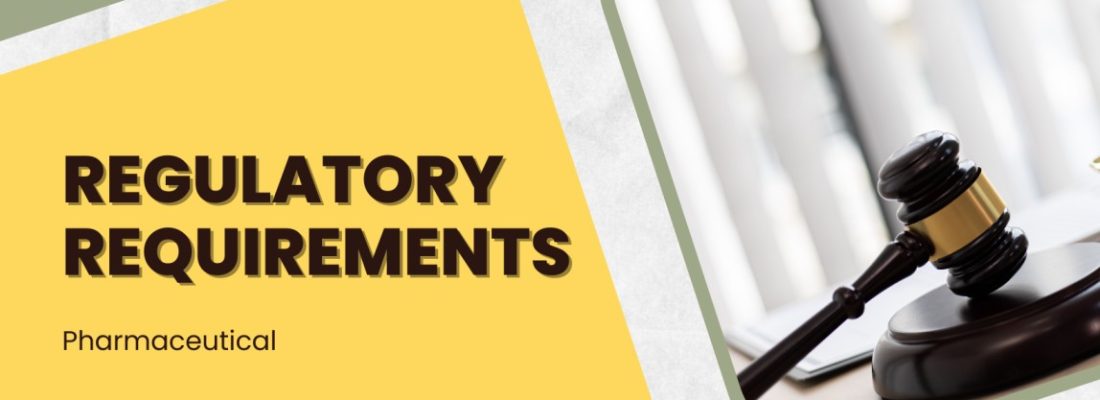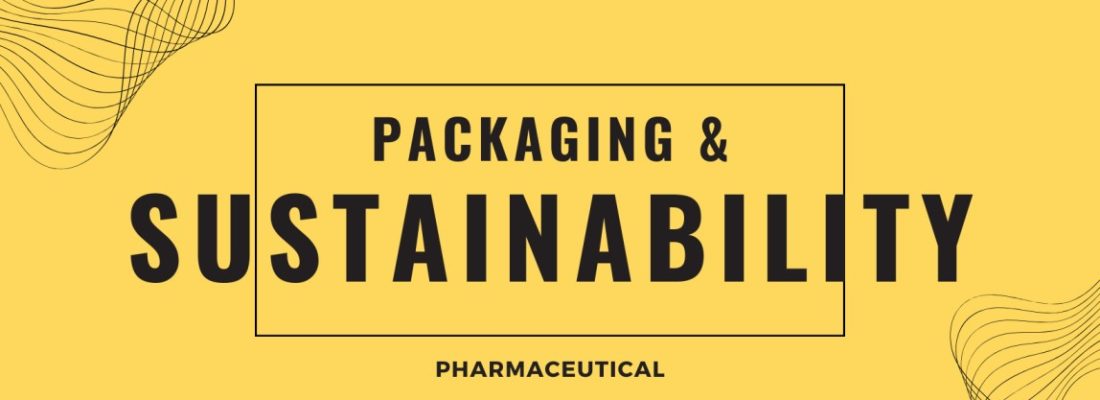Table of Contents
Pharmaceutical Packaging: Introduction
Pharmaceutical packaging is a critical aspect of the healthcare industry, playing a pivotal role in preserving the efficacy and safety of medications while providing essential information to patients and healthcare professionals. This blog explores the significance of pharmaceutical packaging, the various types of packaging materials and designs, regulatory requirements, innovations, challenges, and the growing focus on sustainability within this field.
Importance of Pharmaceutical Packaging: Safeguarding Health
Pharmaceutical packaging is often overlooked as a mundane necessity, but it is, in fact, an indispensable aspect of the healthcare ecosystem. This section explores the multifaceted importance of pharmaceutical packaging, ranging from patient safety and regulatory compliance to sustainability and branding.
Importance of Pharmaceutical Packaging
Pharmaceutical packaging serves a multitude of critical functions, each of which plays a pivotal role in ensuring the safety and efficacy of medications:
Protection: Shielding the Medication
Pharmaceutical products are often highly sensitive to external factors, including light, moisture, and oxygen. The primary function of packaging is to act as a protective barrier, safeguarding medications from degradation and ensuring they maintain their therapeutic effectiveness throughout their shelf life.
Information: Communicating Vital Details
Pharmaceutical packaging is the primary medium for conveying essential information to patients and healthcare professionals. This includes dosage instructions, potential side effects, expiration dates, and contraindications. Clear and accurate labelling is crucial for safe and effective medication use.
Tamper-Evidence: Ensuring Integrity
In an era of increasing concerns about product tampering, tamper-evident packaging is essential. It is designed to reveal any unauthorized interference, guaranteeing that medications remain uncontaminated and unaltered from the point of manufacture to the hands of the patient.
Dosing Accuracy: Precision in Medication Delivery
Pharmaceutical packaging often incorporates tools to assist patients in accurate dosing, such as calibrated droppers, pre-cut tablets, or syringes. This ensures that patients receive the correct dosage, crucial for therapeutic outcomes.
Brand Identity: Recognition and Trust
Packaging is a powerful branding tool, allowing patients and healthcare providers to identify and differentiate medications. The design and branding of pharmaceutical packaging are strategic elements for building trust and recognition.
Pharmaceutical packaging is far more than a mere container for medications. It’s a linchpin of patient safety, a guardian against counterfeiting, a vehicle for vital information, and a critical tool for brand recognition. As the healthcare landscape evolves, pharmaceutical packaging will continue to adapt, incorporating innovative technologies, eco-friendly materials, and patient-centric designs. In an era where safety, trust, and environmental responsibility are paramount, pharmaceutical packaging remains an indispensable component of the healthcare continuum.

Types of Pharmaceutical Packaging: Exploring the World of Packaging
Pharmaceutical packaging is a critical facet of the healthcare industry, and its significance goes far beyond merely containing pills and liquids. It plays a pivotal role in ensuring the safety, efficacy, and accessibility of medications. In this section, we will delve into the various types of pharmaceutical packaging, their unique features, and the factors that influence their selection.
Types of Pharmaceutical Packaging
Pharmaceutical packaging comes in various forms, each tailored to specific medications and their intended use. Here are some of the primary types:
Blister Packs:
Description: Blister packs consist of a sheet of plastic or aluminium-containing individual pockets or cavities, each holding a single dose of medication.
Advantages: Excellent for protecting medication from external factors, ensuring dose accuracy, and offering clear dosing schedules.
Common Use: Used for tablets, capsules, and certain liquid unit-dose medications.
Bottles and Containers:
Description: Traditional bottles and containers made of plastic or glass with screw caps or child-resistant closures.
Advantages: Versatile and suitable for a wide range of medications, with various sizes available.
Common Use: Used for solid and liquid medications, from over-the-counter pills to prescription cough syrups.
Vials:
Description: Small, sealed glass or plastic containers often used for sterile injections and vaccines.
Advantages: Ensure sterility and safety for injectable medications.
Common Use: Essential for vaccines, insulin, and some antibiotics.
Ampoules:
Description: Sealed, small glass containers that need to be broken open before use.
Advantages: Ideal for preserving the integrity of sensitive injectables.
Common Use: Used for high-value, sensitive medications, such as certain vaccines and biologics.
Prefilled Syringes:
Description: Ready-to-use syringes filled with a precise dose of medication.
Advantages: Ensure accurate dosing, minimize waste, and reduce the risk of contamination.
Common Use: Common for vaccines, insulin, and self-administered injections.
Tamper-Evident Packaging:
Description: Packaging that clearly shows if it has been tampered with, offering additional safety.
Advantages: Provides peace of mind regarding the integrity of the medication.
Common Use: Widely used in over-the-counter medications.
Specialized Packaging:
Description: Tailored packaging for specific needs, such as blister packs with built-in alarms for scheduled dosing.
Advantages: Enhance medication adherence and safety.
Common Use: Targeted at specific patient groups, including the elderly or those with chronic conditions.
Factors Influencing Pharmaceutical Packaging Choice
The selection of the most suitable packaging type is influenced by various factors, including:
- Medication Type: Different medications have unique requirements. For example, liquid medications need different packaging from solid dosage forms.
- Regulatory Compliance: Packaging must adhere to local and international regulations to ensure patient safety.
- Patient Population: Consideration of the end-users’ age, mobility, and health conditions is essential.
- Environmental Impact: The pharmaceutical industry is increasingly focusing on sustainable packaging solutions to reduce its carbon footprint.
- Cost Considerations: Balancing the cost of packaging with the overall cost of production is critical for manufacturers.
- Innovation: Advancements in packaging technology, such as smart packaging with electronic components, may influence choices.
- Branding and Marketing: Packaging often serves as a branding tool, and its design can impact patient trust and recognition.
Pharmaceutical packaging is a multidimensional aspect of the healthcare industry, encompassing a wide range of packaging types designed to protect medications, convey information, and ensure patient safety. The choice of packaging type depends on various factors, including the type of medication, patient population, regulatory requirements, and environmental considerations. As the pharmaceutical industry continues to evolve, innovation in packaging technology will play a pivotal role in enhancing patient safety, medication adherence, and sustainability.

Regulatory Requirements in Pharmaceutical Packaging: Indian Pharmaceutical Packaging Industry
Pharmaceutical packaging regulations in India are essential to ensure the safety, efficacy, and quality of drugs and medical products in the country. These regulations are primarily governed by the Drugs and Cosmetics Act, 1940, and the associated Drugs and Cosmetics Rules, 1945. The Central Drugs Standard Control Organization (CDSCO) is the regulatory authority responsible for implementing and enforcing these regulations. Here are some key aspects of pharmaceutical packaging regulations in India:
- Labelling Requirements: Pharmaceutical packaging must include specific information such as the name of the drug, dosage form, batch number, manufacturing and expiry date, MRP (Maximum Retail Price), manufacturer’s name and address, and dosage instructions. All of this information should be clearly and legibly printed on the packaging.
- Tamper-Evident Packaging: Tamper-evident packaging is mandated to ensure the integrity of the product. This is crucial in preventing the sale of adulterated or tampered products. Any tampering should be evident upon visual inspection.
- Child-Resistant Packaging: Certain drugs, especially those that are potentially harmful if ingested accidentally, should be packaged in child-resistant containers. This helps in preventing unintentional consumption by children.
- Packaging and Storage Conditions: Pharmaceutical packaging should ensure that the drug is protected from external factors such as light, moisture, and oxygen. Special packaging, like amber-colored vials for light-sensitive drugs, may be required.
- Serialisation and Barcoding: In an effort to combat counterfeit drugs, there are regulations in place that require serialisation, barcoding, and unique identification of drug packages. This helps in tracking and tracing the movement of drugs in the supply chain.
- Label Claims: The packaging must not make false, misleading, or unverified claims about the drug’s efficacy or safety. The claims made on the packaging must be in line with the approved labeling and should adhere to regulations.
- Patient Information Leaflets: Some pharmaceutical products are required to include patient information leaflets providing detailed instructions on the drug’s use, potential side effects, and precautions. This helps in ensuring safe and effective usage.
- Registration and Licensing: Manufacturers, importers, and distributors of pharmaceuticals and their packaging materials must be registered and licensed by the appropriate regulatory authorities.
- Import and Export Regulations: There are specific regulations governing the import and export of pharmaceutical products and their packaging materials. These include the need for import licenses and adherence to international quality standards.
- Regulatory Compliance: All pharmaceutical packaging must comply with the guidelines and regulations outlined in the Drugs and Cosmetics Act and Rules, and with any additional requirements introduced by the CDSCO.
- Amendments and Updates: The pharmaceutical packaging regulations are periodically updated to keep pace with advances in technology, changes in the industry, and emerging global standards. It’s important for manufacturers to stay informed about these changes.
These regulations are critical in ensuring the safety and efficacy of pharmaceutical products in India. Non-compliance can lead to legal consequences, including product recalls and other penalties. Pharmaceutical companies must work in close conjunction with the CDSCO and adhere to these regulations to ensure the quality of their products and the safety of patients.

Innovations in Pharmaceutical Packaging: Ensuring Safety, Compliance, and Patient Convenience
Pharmaceutical packaging has come a long way from basic bottles and blister packs. It has evolved in response to the ever-changing demands of the pharmaceutical industry, ensuring the safety, efficacy, and convenience of medications. This section explores some of the latest innovations in pharmaceutical packaging, focusing on how they address critical issues like patient safety, compliance, and sustainability.
The Necessity for Innovation
Pharmaceutical packaging innovations are driven by several factors:
- Patient Safety: Ensuring the right medication reaches the right patient is paramount. Innovations help prevent errors and tampering.
- Regulatory Compliance: The pharmaceutical industry is highly regulated. Packaging innovations assist manufacturers in meeting evolving compliance standards.
- Patient Convenience: Improving packaging can enhance medication adherence, particularly for patients with chronic conditions.
- Counterfeit Medications: Packaging innovations serve as a deterrent against counterfeit drugs, protecting patients from harm.
Innovations in Pharmaceutical Packaging
Smart Packaging:
Description: Smart packaging includes technologies like RFID tags, QR codes, or NFC (Near Field Communication) for enhanced traceability and patient engagement.
Benefits: Patients can scan these codes to access medication information, including instructions and reminders. Manufacturers can track products through the supply chain, improving safety and reducing counterfeiting.
Child-Resistant and Senior-Friendly Packaging:
Description: Packaging that is both child-resistant and easy for seniors to open.
Benefits: Addresses the need to protect children while ensuring older patients can access their medications. It enhances safety and convenience.
Biosensors and Indicators:
Description: These are integrated into packaging to monitor the quality and integrity of the medication.
Benefits: They provide real-time data on temperature, humidity, or exposure to light, ensuring medications are stored and transported under suitable conditions.
Sustainable Packaging:
Description: Eco-friendly materials and designs that reduce waste.
Benefits: Lower environmental impact, reduced plastic usage, and improved sustainability in line with global eco-conscious trends.
3D Printing:
Description: Customized dosage forms and personalized packaging.
Benefits: Tailored medication solutions for individual patients, improving dosing accuracy and adherence.
Biodegradable Packaging:
Description: Packaging materials that break down naturally.
Benefits: Minimizes environmental pollution, particularly in single-use packaging items.
Advanced Tamper-Evident Features:
Description: Beyond traditional seals, packaging now includes more advanced tamper-evident technologies.
Benefits: Enhances product safety by providing clear indications of tampering.
Nanotechnology in Packaging:
Description: Nanomaterials are used in packaging to enhance drug delivery and stability.
Benefits: Improved drug bioavailability and stability, offering better patient outcomes.
Challenges and Considerations in Innovations in Pharmaceutical Packaging
While innovations in pharmaceutical packaging offer significant benefits, there are challenges and considerations:
- Cost: Cutting-edge packaging solutions can be expensive to implement, affecting overall drug pricing.
- Regulatory Approval: New packaging technologies may require regulatory approval, leading to delays.
- Education: Both healthcare professionals and patients need to understand and adapt to these innovations.
- Sustainability: Balancing innovation with environmental concerns is crucial. While sustainable packaging is a trend, it should not compromise product integrity.
Innovations in pharmaceutical packaging play a crucial role in ensuring patient safety, regulatory compliance, and sustainability. They address the ever-evolving needs of the pharmaceutical industry, from personalized medication solutions to eco-friendly materials. However, a balance must be struck between innovation, cost-effectiveness, and patient education to reap the full benefits of these advancements.
As the healthcare landscape continues to evolve, pharmaceutical packaging will remain a vital component in the quest for safer, more efficient, and environmentally responsible medication delivery.

Challenges in Pharmaceutical Packaging: Navigating the Complexities
Pharmaceutical packaging is a highly regulated and crucial aspect of the healthcare industry, with a primary focus on ensuring the safety, efficacy, and quality of medications. While pharmaceutical packaging has seen many advancements, it continues to face several significant challenges. This section explores the complex landscape of challenges in pharmaceutical packaging, from counterfeiting to sustainability and regulatory compliance.
Counterfeiting and Product Safety
Counterfeit Medications: The global pharmaceutical industry grapples with the counterfeit drug market. Counterfeit medications not only pose a significant risk to patient health but also erode trust in the industry. Packaging innovations such as tamper-evident features and serialisation have been introduced to combat this issue.
Regulatory Compliance: Meeting stringent regulatory requirements is a major challenge in pharmaceutical packaging. Manufacturers must ensure their packaging complies with an array of international, national, and regional regulations, and this often requires significant investment in testing and documentation.
Patient Safety and Medication Adherence
Dosing Errors: Packaging plays a pivotal role in ensuring patients take the right dose at the right time. Inadequate or unclear packaging can lead to dosing errors, which can be life-threatening, particularly in the case of potent or narrow therapeutic index medications.
Senior-Friendly Packaging: An aging population means that pharmaceutical packaging must be user-friendly for seniors. It should be easy to open, and dosages should be clear and simple to understand. However, creating packaging that is both child-resistant and senior-friendly is a delicate balance.
Complex Regimens: Medications with complex dosing regimens pose a significant challenge to packaging. For patients with multiple medications, adherence packaging solutions are required to help them organize and take their medication as prescribed.
Environmental Sustainability
Excessive Waste: The pharmaceutical industry generates a substantial amount of packaging waste, contributing to environmental concerns. Single-use plastic packaging, in particular, has come under scrutiny.
Sustainable Packaging: Balancing the need for safety and sustainability is challenging. The development and adoption of eco-friendly packaging materials and designs, like biodegradable options, are steps towards reducing the environmental impact.
Technology Integration
Smart Packaging: While smart packaging, such as QR codes and RFID tags, has the potential to enhance traceability and patient engagement, integrating these technologies into the pharmaceutical packaging process is complex and expensive.
3D Printing: Customized dosages and personalized packaging using 3D printing can be revolutionary for patient care. However, the implementation of 3D printing at scale in pharmaceutical packaging faces technological and regulatory challenges.
Expanding Global Supply Chains
Globalization: The pharmaceutical industry increasingly relies on global supply chains, which are susceptible to geopolitical disruptions, natural disasters, and transportation issues. Maintaining product integrity and safety throughout the supply chain is a complex task.
Cold Chain Management: Packaging must ensure that temperature-sensitive medications maintain their integrity throughout the supply chain. This is particularly critical for vaccines and biologics.
Labelling and Serialization
Serialization: The introduction of serialization to trace and track drugs has introduced complexities, especially for small manufacturers. Ensuring that every drug package carries a unique identification code is a considerable challenge.
Patient Information Leaflets: Providing comprehensive and understandable patient information leaflets in a limited space presents a challenge. These leaflets are crucial for patient safety and medication adherence.
Pharmaceutical packaging is a critical component of the healthcare industry, responsible for ensuring patient safety, adherence, and environmental sustainability. However, it faces a myriad of challenges, from counterfeit drugs to complex regulatory requirements, dosing errors, and environmental concerns. To navigate this landscape successfully, pharmaceutical companies must invest in innovation, technology, and a commitment to patient well-being, while also considering the environmental impact of their packaging solutions. Addressing these challenges will be essential to shaping the future of pharmaceutical packaging and ensuring the safe and effective delivery of medications to patients around the world.

Sustainability and Pharmaceutical Packaging: A Prescription for a Greener Future
The pharmaceutical industry plays a vital role in healthcare, but it’s also associated with considerable environmental challenges, particularly in the realm of packaging. In this section, we delve into the complex and evolving relationship between sustainability and pharmaceutical packaging, exploring the challenges, solutions, and the path forward towards an eco-friendlier future.
The Environmental Impact of Pharmaceutical Packaging
Packaging Waste: The pharmaceutical industry generates a significant amount of packaging waste, from pill bottles to blister packs. This waste contributes to landfills and environmental pollution.
Single-Use Plastics: Many pharmaceutical packages are made from single-use plastics, which are a major environmental concern due to their non-biodegradable nature.
Energy Consumption: The manufacturing of pharmaceutical packaging materials, including plastics and glass, consumes energy and contributes to greenhouse gas emissions.
The Push for Sustainability
In recent years, there has been a growing emphasis on sustainability within the pharmaceutical industry, driven by several factors:
Regulatory Pressure: Regulatory authorities worldwide are increasingly demanding sustainable practices in pharmaceutical packaging, as part of broader efforts to reduce the environmental impact of the industry.
Corporate Responsibility: Pharmaceutical companies are recognizing the importance of corporate social responsibility (CSR) and are making commitments to reduce their environmental footprint.
Consumer Demand: Patients and consumers are increasingly environmentally conscious and are pushing for greener packaging options.
Sustainable Innovations in Pharmaceutical Packaging
Eco-Friendly Materials: Many pharmaceutical companies are exploring biodegradable and recyclable packaging materials. Some are even using materials derived from renewable resources, such as plant-based plastics.
Minimalist Packaging: A “less is more” approach to packaging design aims to reduce the amount of material used while maintaining safety and efficacy. Smaller packaging can lead to less waste.
Reducing Energy Consumption: Innovations are being made to reduce the energy required for packaging material production. This includes using more energy-efficient manufacturing processes and sourcing materials locally to reduce transportation energy.
Pharmaceutical Recycling Programs: Some companies are implementing recycling programs for pharmaceutical packaging materials, ensuring that they are collected, separated, and recycled properly.
Biopharmaceuticals and Biologics: These innovative drug classes can often reduce the environmental impact of pharmaceuticals as they may require less packaging material, lower shipping weight, and have fewer storage requirements.
Smart Packaging: Smart packaging technologies, such as RFID tags, can help improve supply chain efficiency and reduce packaging waste.
Challenges and Complexities
Regulatory Compliance: Navigating the regulatory landscape when adopting sustainable packaging practices can be complex. Companies must ensure that their choices meet all the necessary safety and compliance requirements.
Balancing Sustainability and Safety: Striking the right balance between sustainability and ensuring that medications are safe and effective can be challenging. For example, some eco-friendly materials may not be suitable for certain drug formulations.
Cost Considerations: Sustainable packaging solutions can sometimes be more expensive, and pharmaceutical companies must balance the cost of sustainable practices with the overall cost of production.
Consumer Education: Ensuring that patients understand and accept changes in packaging materials and design is essential. Proper patient education can promote recycling and waste reduction efforts.
The Path Forward
Sustainability and pharmaceutical packaging are intricately linked, and the industry is making significant strides toward a greener future. As pharmaceutical companies continue to invest in eco-friendly materials, more efficient production processes, and innovative design, the environmental footprint of the industry is expected to decrease. Additionally, regulatory pressure and consumer demand will likely drive further improvements in sustainability within pharmaceutical packaging. A greener future in the pharmaceutical industry not only benefits the environment but also reinforces patient and consumer trust in the industry’s commitment to safety and the planet.
Conclusion
Pharmaceutical packaging is an indispensable part of the healthcare industry, ensuring the safe and effective delivery of medications to patients. It must balance the demands of protection, information, safety, and sustainability. As the industry continues to evolve, innovations and sustainable practices will play an increasingly important role in meeting the demands of a changing world. Patient safety and well-being are at the heart of pharmaceutical packaging, and this will remain the guiding principle in the years to come.
We hope some new perspective has been provided on pharmaceutical packaging through our blog. Learn more about our pharmaceutical solutions through our track and trace page and solutions page.
Got questions? Ideas? Get in touch with us, contact now
or email us: [email protected]


